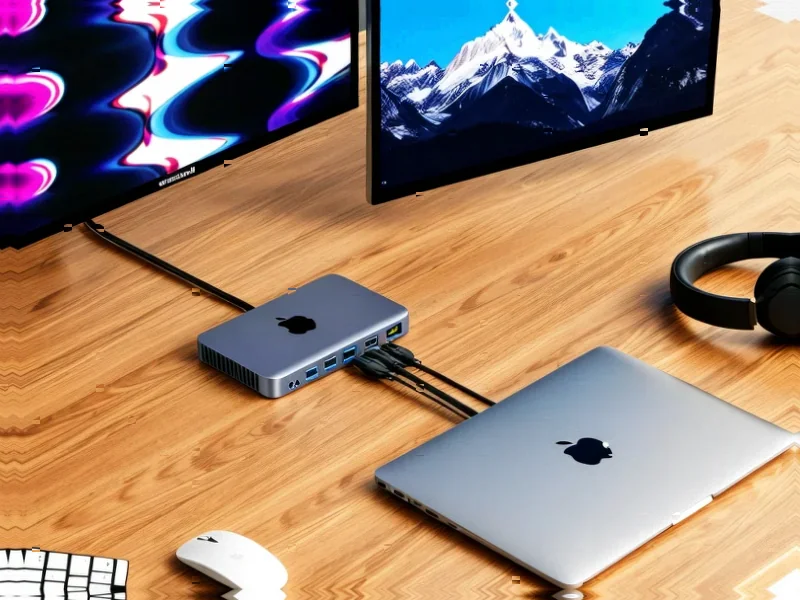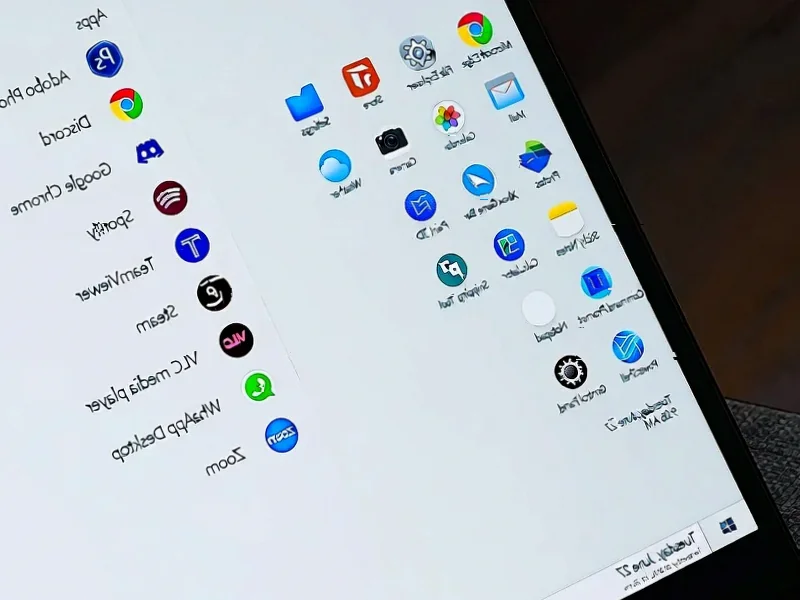According to 9to5Mac, Mark Gurman’s Power On newsletter outlines Apple’s product roadmap for 2026, revealing that the company plans to launch multiple M5-powered Mac models throughout the year. The early 2026 releases are expected to include M5 MacBook Air, M5 Pro and M5 Max MacBook Pros, and new Mac monitors, while later in the year Apple will refresh the Mac mini and Mac Studio with M5 chips. Notably absent from Gurman’s report is any mention of an M5 iMac refresh, suggesting Apple may be delaying that product until the M6 generation or simply hasn’t finalized plans yet. The timing strategy appears to potentially separate laptop and desktop releases, though the availability of M5 Pro and M5 Max chips for MacBook Pros could theoretically enable simultaneous desktop refreshes given neither the Mac mini nor Mac Studio are expected to receive hardware redesigns. This comprehensive M5 rollout represents Apple’s next major silicon transition.
The Curious Case of the Missing iMac
The absence of an M5 iMac in Gurman’s report is particularly telling given Apple’s historical update patterns. The iMac has traditionally been one of Apple’s most iconic consumer desktop products, but its omission suggests Apple may be reevaluating its position in the all-in-one market. This could indicate several strategic shifts: Apple might be prioritizing the professional workstation market with the Mac Studio and Mac Pro, or they could be preparing a more significant redesign for the iMac that requires additional development time beyond the M5 cycle. Another possibility is that Apple sees the combination of Mac mini with external displays as a more flexible approach for both consumers and professionals, especially with new Mac monitors reportedly coming that would complement these modular systems perfectly.
The Desktop-Laptop Release Split
Apple’s apparent decision to potentially separate laptop and desktop M5 releases represents a departure from their typical “everything at once” approach seen during previous transitions. This staggered timing strategy could serve multiple purposes: it allows Apple to manage supply chain constraints more effectively, creates multiple news cycles throughout the year, and enables them to gauge market response to the base M5 architecture before committing to the more complex Pro and Max variants for desktop systems. However, this approach risks frustrating professional users who prefer unified ecosystem updates and may delay purchasing decisions if they’re waiting for specific configurations. The fact that neither desktop Mac is expected to get a hardware redesign in the M5 generation makes the timing separation even more puzzling from a manufacturing complexity standpoint.
Professional vs Consumer Segmentation
Apple’s M5 roadmap reveals continued refinement of their product segmentation strategy. By potentially releasing MacBook Air and MacBook Pro models together early in the year, Apple can capture both consumer and professional mobile markets simultaneously. The later desktop releases then create a second wave targeting studio professionals and power users. This approach maximizes marketing impact while ensuring that Apple’s most profitable segments—professional users who need maximum performance—receive focused attention. However, the risk here is that Apple’s increasingly complex chip lineup (M5, M5 Pro, M5 Max, and eventually M5 Ultra) could create consumer confusion and dilute the clear messaging that made the M1 transition so successful.
2026 Competitive Positioning
Looking ahead to 2026, Apple’s M5 rollout will arrive in a significantly different competitive landscape than previous generations. By that time, Qualcomm’s Snapdragon X Elite platform will have matured, and we’ll likely see third-generation ARM chips from Microsoft’s partners. Intel and AMD will also have advanced their own efficiency-focused architectures in response to Apple Silicon’s success. The M5’s performance improvements will need to be substantial to maintain Apple’s leadership position, particularly in professional workflows where Windows-based workstations are closing the gap. The absence of an iMac refresh could also leave an opening for competitors in the all-in-one market, though Apple may be betting that most consumers have shifted toward laptop-plus-external-display setups post-pandemic.
Managing Expectations for M5 Performance
While early speculation about any new Apple Silicon generation tends toward optimistic projections, it’s important to maintain realistic expectations for the M5. The transition from M3 to M4 showed incremental rather than revolutionary improvements in many workloads, and the M5 will likely follow a similar pattern of refined efficiency and moderate performance gains. The more significant story may be in specialized accelerators for AI and machine learning workloads, which are becoming increasingly important across both consumer and professional applications. Apple’s challenge will be balancing these specialized improvements with general-purpose performance that justifies the upgrade cycle for existing M-series Mac users.




